How J-chain ensures the assembly of immunoglobulin IgM pentamers
- PMID: 39632981
- PMCID: PMC11729874
- DOI: 10.1038/s44318-024-00317-9
How J-chain ensures the assembly of immunoglobulin IgM pentamers
Abstract
Polymeric IgM immunoglobulins have high avidity for antigen and complement, and dominate primary antibody responses. They are produced either as assemblies of six µ2L2 subunits (i.e., hexamers), or as pentamers of two µ2L2 subunits and an additional protein termed J-chain (JC), which allows transcytosis across epithelia. The molecular mechanism of IgM assembly with the desired stoichiometry remained unknown. Here, we show in vitro and in cellula that JC outcompetes the sixth IgM subunit during assembly. Before insertion into IgM, JC exists as an ensemble of largely unstructured, protease-sensitive species with heterogeneous, non-native disulfide bonds. The J-chain interacts with the hydrophobic β-sheets selectively exposed by nascent pentamers. Completion of an amyloid-like core triggers JC folding and drives disulfide rearrangements that covalently stabilize JC-containing pentamers. In cells, the quality control factor ERp44 surveys IgM assembly and prevents the secretion of aberrant conformers. This mechanism allows the efficient production of high-avidity IgM for systemic or mucosal immunity.
Keywords: Antibody Biogenesis; ERp44; Mucosal Immunity; Non-Native Disulfides; Protein Quality Control.
© 2024. The Author(s).
Conflict of interest statement
Disclosure and competing interests statement. The authors declare no competing interests.
Figures
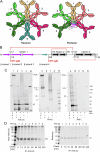
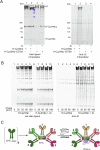
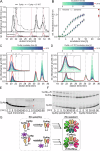
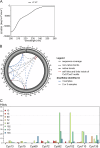
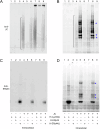
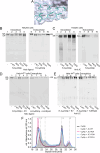

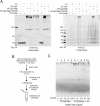
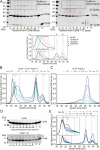
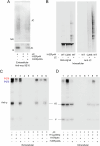
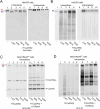
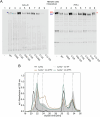
Similar articles
-
Understanding IgM Structure and Biology to Engineer New Antibody Therapeutics.BioDrugs. 2025 May;39(3):347-357. doi: 10.1007/s40259-025-00720-6. Epub 2025 Apr 16. BioDrugs. 2025. PMID: 40237925 Free PMC article. Review.
-
Interplay of J chain and disulfide bonding in assembly of polymeric IgM.Int Immunol. 1997 Aug;9(8):1149-58. doi: 10.1093/intimm/9.8.1149. Int Immunol. 1997. PMID: 9263012
-
Late events in assembly determine the polymeric structure and biological activity of secretory IgM.Mol Immunol. 1997 Mar;34(4):323-31. doi: 10.1016/s0161-5890(97)00029-1. Mol Immunol. 1997. PMID: 9244345
-
Structural and functional analysis of J chain-deficient IgM.J Immunol. 1998 Jun 15;160(12):5979-89. J Immunol. 1998. PMID: 9637512
-
3D Structures of IgA, IgM, and Components.Int J Mol Sci. 2021 Nov 26;22(23):12776. doi: 10.3390/ijms222312776. Int J Mol Sci. 2021. PMID: 34884580 Free PMC article. Review.
Cited by
-
Understanding IgM Structure and Biology to Engineer New Antibody Therapeutics.BioDrugs. 2025 May;39(3):347-357. doi: 10.1007/s40259-025-00720-6. Epub 2025 Apr 16. BioDrugs. 2025. PMID: 40237925 Free PMC article. Review.
-
Impact of Light-Chain Variants on the Expression of Therapeutic Monoclonal Antibodies in HEK293 and CHO Cells.Antibodies (Basel). 2025 Jun 24;14(3):53. doi: 10.3390/antib14030053. Antibodies (Basel). 2025. PMID: 40700293 Free PMC article.
References
-
- Alberini CM, Bet P, Milstein C, Sitia R (1990) Secretion of immunoglobulin M assembly intermediates in the presence of reducing agents. Nature 347:485–487 - PubMed
MeSH terms
Substances
Grants and funding
LinkOut - more resources
Full Text Sources
Miscellaneous

